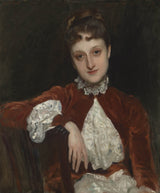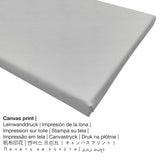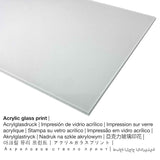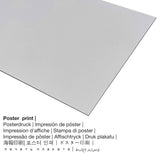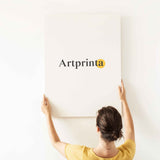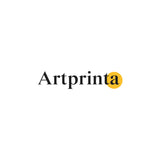John Singer Sargent, 1888 - Oriakụ Charles Deering (Marion Denison Whipple) - ọmarịcha nka.
Ụtụ gụnyere. Mbupu gbakọrọ na ndenye ọpụpụ.
Ihe osise a nwere aha Mrs. Charles Deering (Marion Denison Whipple) mere site na nwoke onye na-ese ihe John Onye ọbụ abụ n’afọ 1888. E ji nha ya see nke mbụ: 71,1 × 61 cm (28 × 24 na). Mmanụ na kwaaji was applied by the North American painter as the medium of the painting. Nowadays, this artwork is in the the Ụlọ ọrụ Art nke Chicago nchịkọta na Chicago, Illinois, Njikota Obodo Amerika. Site n'ikike nke: Art Institute Chicago (ikikere: ngalaba ọha). : mbinye ego amaghị aha. Ọzọkwa, alignment bụ Eserese ya na oke nke 1: 1.2, which implies that the length is 20% shorter than the width. The painter John Singer Sargent was a North American artist from United States, whose art style can mainly be attributed to Impressionism. The American painter lived for a total of 69 afọ, born in the year 1856 in Florence, Firenze province, Tuscany, Italy and died in the year 1925 in London, Greater London, England, United Kingdom.
Họrọ ngwa ngwaahịa gị
Anyị na-enye ụdị dị iche iche nha na ihe maka ngwaahịa ọ bụla. Anyị na-ahapụ gị ka ịhọrọ nha na akụrụngwa ọkacha mmasị gị n'etiti nhọrọ nhazi ngwaahịa ndị a:
- Bipụta na iko acrylic na-egbuke egbuke: A glossy print on acrylic glass, which is sometimes named as a UV print on plexiglass, will turn the original artwork into great décor. The plexiglass with real glass coating protects your custom fine art print against light and external influences for between four and 6 decades.
- Mbipụta kanvas: The UV printed canvas material stretched on a wood frame. Canvas Prints have the advantage of being relatively low in weight, which implies that it is easy to hang up the Canvas print without the support of extra wall-mounts. Canvas prints are suitable for any kind of wall.
- Aluminom dibond mbipụta (ọla): An Aluminium Dibond print is a material with an impressive depth - for a modern impression and a non-reflective surface. A direct Aluminium Dibond Print is the perfect start to art reproductions with aluminum. For our Aluminium Dibond option, we print your chosen work of art onto the surface of the white-primed aluminum material. The bright & white parts of the original artwork shine with a silk gloss, however without glow.
- Mpempe akwụkwọ ederede (akwa akwa akwa): The poster print is a printed sheet of flat canvas paper with a slight surface texture, which resembles the original work of art. A printed poster is perfectly designed for placing the art replica in a special frame. Please bear in mind, that depending on the size of the poster we add a white margin 2-6cm around the print to facilitate the framing with a custom frame.
Ederede iwu: We try whatever we can in order to describe our art products as closely as possible and to demonstrate them visually on the different product detail pages. Still, the pigments of the printing material and the print result might differ slightly from the representation on the device's monitor. Depending on your settings of your screen and the quality of the surface, not all color pigments can be printed 100% realistically. Because our art reproductions are processed and printed by hand, there may also be minor discrepancies in the motif's exact position and the size.
Ozi ederede
| Nkewa edemede: | ọrụ mgbidi |
| Usoro mmeputakwa: | dijitalụ mmeputakwa |
| Usoro nhazi: | UV kpọmkwem obibi |
| Nlụpụta: | German mere |
| Stockdị ngwaahịa: | a na-achọ |
| Ngwaahịa were: | ime ụlọ, ihe ndozi mgbidi |
| Ndozi onyonyo a: | usoro eserese |
| Njikwa oyiyi: | ogologo ruo obosara 1: 1.2 |
| Nsonaazụ: | ogologo bụ 20% mkpụmkpụ karịa obosara |
| Akụrụngwa ị nwere ike ịhọrọ: | ígwè obibi akwụkwọ (aluminium dibond), akwụkwọ mmado (akwụkwọ kwaaji), mbipụta enyo acrylic (nke nwere ezigbo mkpuchi iko), mbipụta akwụkwọ. |
| Nhọrọ nha nha mbipụta kanvas (akwa akwa na etiti ihe ndọtị): | 50x60cm - 20x24", 100x120cm - 39x47", 150x180cm - 59x71" |
| Acrylic glass print (nwere ezigbo mkpuchi iko) nhọrọ: | 50x60cm - 20x24", 100x120cm - 39x47", 150x180cm - 59x71" |
| Mbipụta akwụkwọ mmado (akwụkwọ kwaaji): | 50x60cm - 20x24", 100x120cm - 39x47" |
| Mpempe akwụkwọ Dibony (ihe alumnium) nha dị iche iche: | 50x60cm - 20x24", 100x120cm - 39x47" |
| Igwe onyonyo: | enweghị etiti |
Ọrụ tebụl nka
| Aha nke eserese ahụ: | "Mrs. Charles Deering (Marion Denison Whipple)" |
| Nhazi nke ọrụ nka: | sere |
| Okwu nche anwụ: | nkà nke oge a |
| Century: | 19th narị afọ |
| Afọ okike: | 1888 |
| Afọ nka: | ihe karịrị 130 afọ |
| Agba na: | mmanụ na kwaaji |
| Ogo nke ọrụ nka izizi: | 71,1 × 61 cm (28 × 24 na) |
| Ụlọ ihe ngosi nka / mkpokọta: | Ụlọ ọrụ Art Chicago |
| Ebe ebe ngosi nka: | Chicago, Illinois, Njikota Obodo Amerika |
| E Nwere na: | Ụlọ ọrụ Art Chicago |
| Ikikere nke ihe osise: | ngalaba ọha |
| Site n'aka: | Ụlọ ọrụ Art Chicago |
| kreditline ọrụ nka: | mbinye ego amaghị aha |
Tebụl nkọwa omenkà
| Aha onye nka: | John Onye ọbụ abụ |
| A makwaara dịka: | Sargent John, Sargent John S., Sargeant John Singer, sargent j.s., Sargent, J. s. Sargent, J. Singer Sargent, js sargent, John Singer Sargent, john s. sargent, sargent john singer, J.S. Sargent, Sargent John Singer, J. Sargent, Sargent John-Singer, john sargent |
| okike onye nka: | nwoke |
| Nationality: | American |
| Ọrụ onye na-ese ihe: | onye na-ese ihe |
| Country: | United States |
| Nhazi nke onye nka: | omenkà nke oge a |
| Ụdị nke onye na-ese ihe: | Mmetụta |
| Akwụsị: | 69 afọ |
| Amụrụ n'afọ: | 1856 |
| Amụrụ na (ebe): | Florence, mpaghara Firenze, Tuscany, Italy |
| Nwụrụ n'afọ: | 1925 |
| Ebe ọnwụ: | London, Greater London, England, United Kingdom |
Edochiri ederede a site na nwebiisinka © | www.artprinta.com (Artprinta)
Original information about the artwork by the museum's website (© Copyright - Art Institute Chicago - www.artic.edu)
The sitter was the wife of Charles Deering, Chicago businessman, important benefactor of the Art Institute, and lifelong friend and patron of artist John Singer Sargent. In this half-length portrait, the painter depicted Marion Deering seated with her right arm resting on a chairback, her eyes engaging the viewer. Sargent rendered her face and hand with a high degree of finish, skills he had fine-tuned in the 1870s while a student in Paris. The broader handling of paint in her dress and its lace embellishments signals Sargent’s facility with the tactile and expressive possibilities of paint. Indeed, in the mid-1880s, Sargent not only worked in portraiture, but also experimented with the themes and vocabularies of Impressionism.

